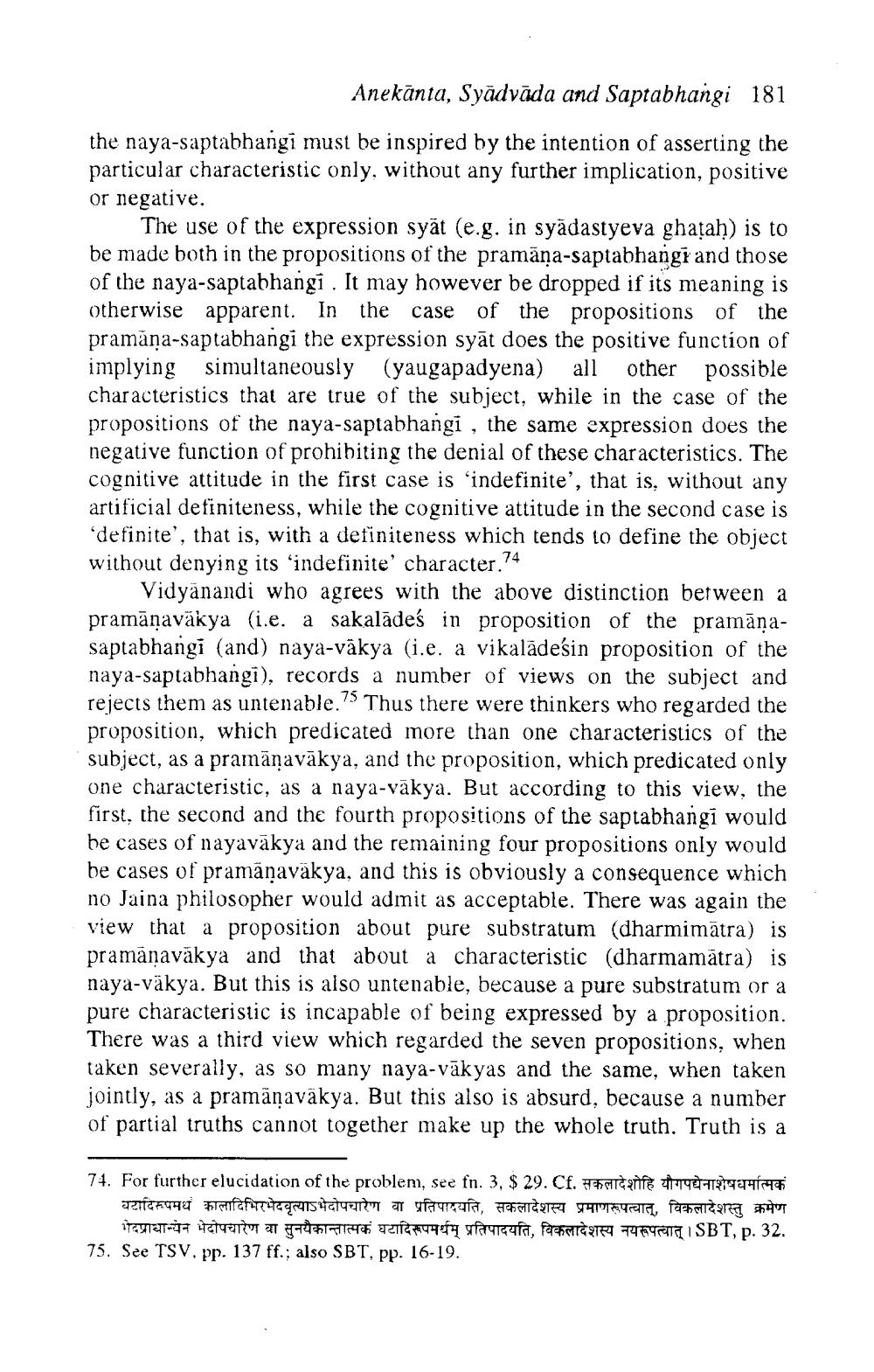________________
Anekānta, Syadvāda and Saptabhangi 181
the naya-saptabhangi must be inspired by the intention of asserting the particular characteristic only, without any further implication, positive or negative.
The use of the expression syāt (e.g. in syādastyeva ghatah) is to be made both in the propositions of the pramāna-saptabhangi and those of the naya-saptabhangi . It may however be dropped if its meaning is otherwise apparent. In the case of the propositions of the pramăna-saptabhangi the expression syāt does the positive function of implying simultaneously (yaugapadyena) all other possible characteristics that are true of the subject, while in the case of the propositions of the naya-saptabhangi , the same expression does the negative function of prohibiting the denial of these characteristics. The cognitive attitude in the first case is 'indefinite', that is, without any artificial definiteness, while the cognitive attitude in the second case is definite', that is, with a definiteness which tends to define the object without denying its 'indefinite' character.74
Vidyānandi who agrees with the above distinction between a pramānaväkya (i.e. a sakalādes in proposition of the pramānasaptabhangi (and) naya-väkya (i.e. a vikalādesin proposition of the naya-saptabhangi), records a number of views on the subject and rejects them as untenable. Thus there were thinkers who regarded the proposition, which predicated more than one characteristics of the subject, as a pramänavākya, and the proposition, which predicated only one characteristic, as a naya-vakya. But according to this view, the first, the second and the fourth propositions of the saptabhangi would he cases of nayavākya and the remaining four propositions only would be cases of pramânaväkya, and this is obviously a consequence which no Jaina philosopher would admit as acceptable. There was again the view that a proposition about pure substratum (dharmimatra) is pramānavākya and that about a characteristic (dharmamätra) is naya-väkya. But this is also untenable, because a pure substratum or a pure characteristic is incapable of being expressed by a proposition. There was a third view which regarded the seven propositions, when taken severally, as so many naya-vākyas and the same, when taken jointly, as a pramänavakya. But this also is absurd, because a of partial truths cannot together make up the whole truth. Truth is a
74. For further elucidation of the problem, see fn. 3, $ 29. Cf. f
वटादिरूपमधं कालादिभिरभेदवृत्याऽभेदोपचारेण वा प्रतिपादयति, सकलादेशस्य प्रमाणरूपत्वात्, विकलादेशस्तु क्रमेण
Itaunarena ter at F ETA TETY O F fa, Ferenc 64 7469CIITTI SBT, p. 32. 75. See TSV. pp. 137 ff.; also SBT, pp. 16-19.




